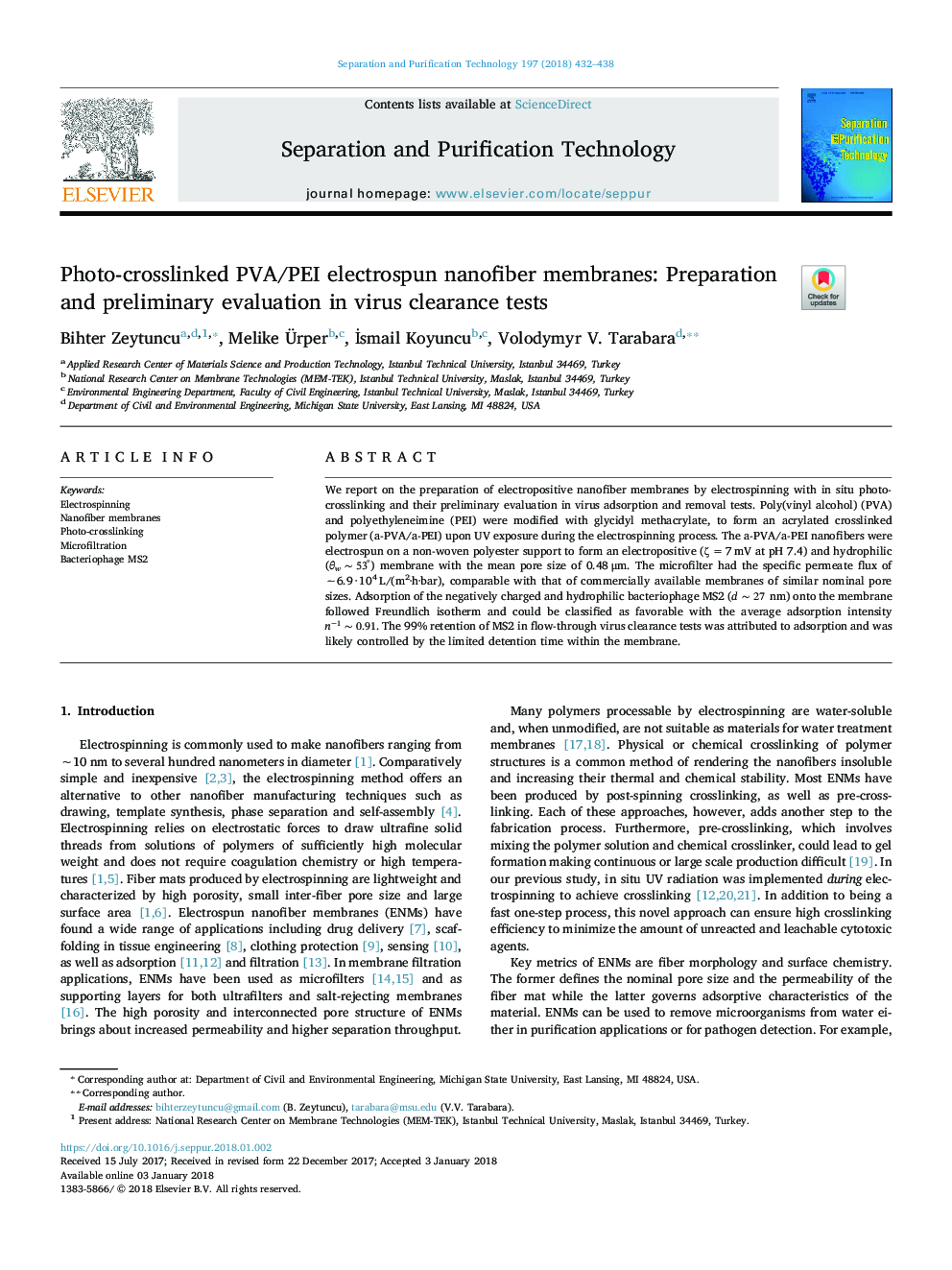| Article ID | Journal | Published Year | Pages | File Type |
|---|---|---|---|---|
| 7043946 | Separation and Purification Technology | 2018 | 7 Pages |
Abstract
We report on the preparation of electropositive nanofiber membranes by electrospinning with in situ photo-crosslinking and their preliminary evaluation in virus adsorption and removal tests. Poly(vinyl alcohol) (PVA) and polyethyleneimine (PEI) were modified with glycidyl methacrylate, to form an acrylated crosslinked polymer (a-PVA/a-PEI) upon UV exposure during the electrospinning process. The a-PVA/a-PEI nanofibers were electrospun on a non-woven polyester support to form an electropositive (ζâ¯=â¯7â¯mV at pH 7.4) and hydrophilic (θwâ¼53°) membrane with the mean pore size of 0.48â¯Î¼m. The microfilter had the specific permeate flux of â¼6.9â¯Â·â¯104â¯L/(m2·h·bar), comparable with that of commercially available membranes of similar nominal pore sizes. Adsorption of the negatively charged and hydrophilic bacteriophage MS2 (dâ¼27â¯â¯nm) onto the membrane followed Freundlich isotherm and could be classified as favorable with the average adsorption intensity n-1â¼0.91. The 99% retention of MS2 in flow-through virus clearance tests was attributed to adsorption and was likely controlled by the limited detention time within the membrane.
Related Topics
Physical Sciences and Engineering
Chemical Engineering
Filtration and Separation
Authors
Bihter Zeytuncu, Melike Ãrper, Ä°smail Koyuncu, Volodymyr V. Tarabara,
